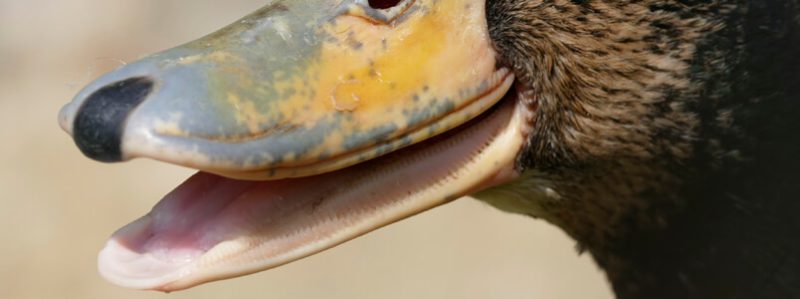Whether you’re raising ducks or feeding ducks at a local park, you might be wondering… do ducks have teeth? Have you ever noticed little notches inside a duckbill and thought are those teeth?
Ducks use their bills to find and grab tasty treats. Whether they are fish, grasses, weeds, feed, or even insects! Ducks eat all kinds of things.
Their bills have special features that allow them to filter out unneeded or inedible materials. Their bills also allow them to separate food from excess water.
Anatomy of A Duckbill | Do Ducks Have Teeth?
Contents
The duckbill is designed for rooting around in the soil and in water for tasty treats. The upper bill is called the upper mandible, It’s attached to the skull and is in a fixed position. The lower bill or lower mandible has the ability to move, much like a human jaw.
The edge of a duckbill is soft. This provides the duck with the ability to feel around for food. Similarly, to the way humans use their fingertips to feel for things.
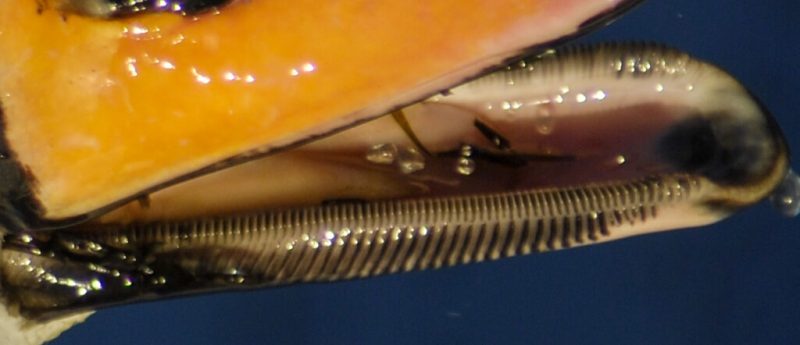
At the tip of the bill is a small bump, called a “bean” or “nail”. As pictured below. This bump is a pretty cool tool. The nail is hard and can be worn down with use, but I’ve read that it can grow back much like a fingernail would. Ducks use it to dig through the soil to help them find all kinds of tasty treats!
The shape, size, and color of the nail can vary between breeds. Sometimes the nail is a contrasting color to the rest of the bill, like in the picture below.
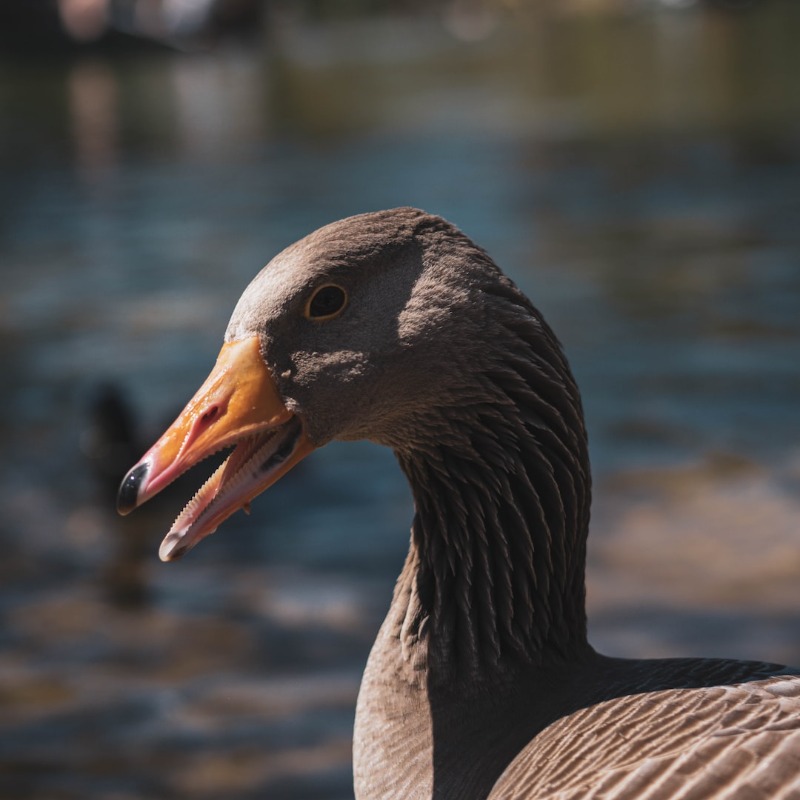
However, sometimes it’s a similar color to the rest of the bill, like in the photo below.
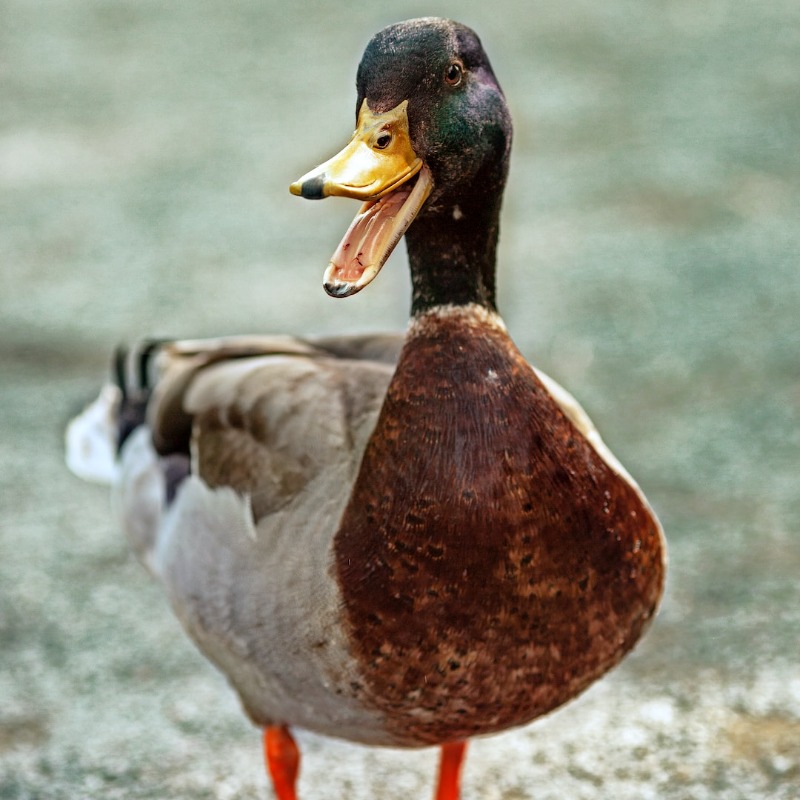
Ducks also use their bills for grooming. They spread oil from a gland at the base of their tail onto their feathers to keep them waterproof. The bill is also used to preen their feathers and remove any dirt or parasites.
Beyond feeding and grooming, the bill plays a crucial role in the social behavior of ducks. It is used for communication, such as when males use their bills to impress females during courtship displays. They also use their bills to establish dominance over other ducks during aggressive encounters.
Ok, So Do Ducks Have Teeth or Not?
Have you ever noticed little notches inside a duckbill and wondered if those were in fact teeth? Maybe you wondered if not teeth what are they, and what is their purpose?
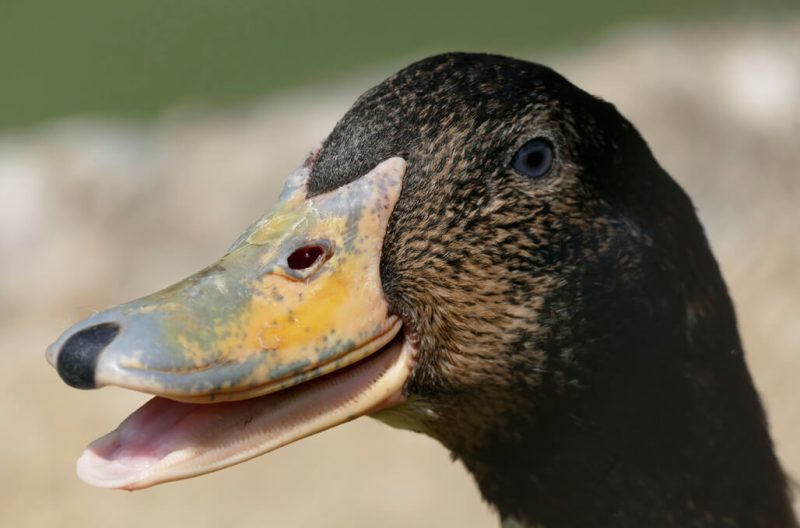
We’re going to dive deep into what those little notches are, how they work, and what their purpose actually is.
So finally, for the question you’ve all been waiting for! Do ducks have teeth? The simple answer is no. No, ducks don’t have teeth. However, ducks do have serrated notches in their bills, called lamellae.
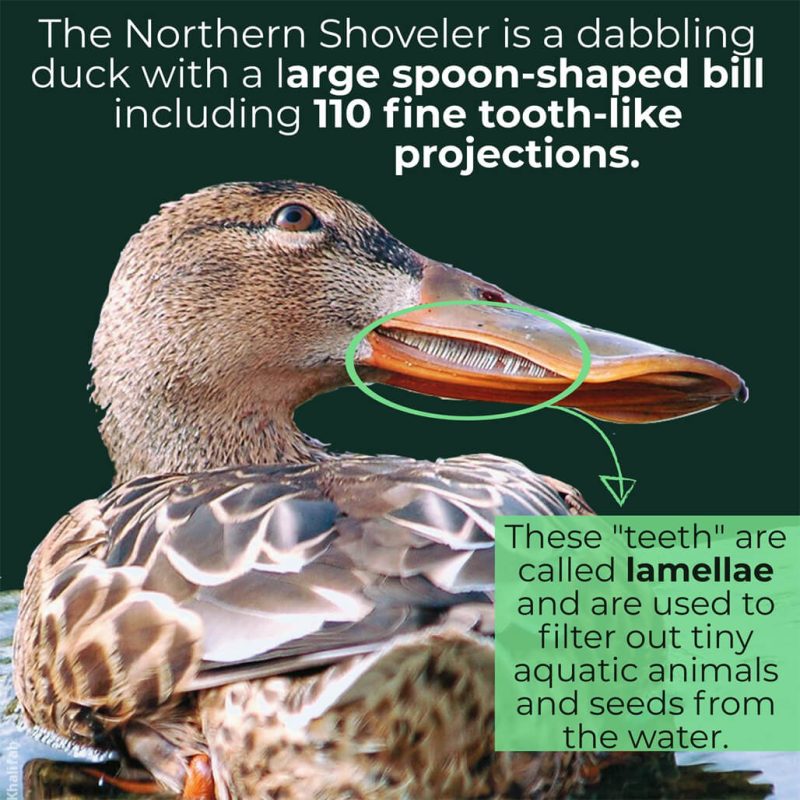
Ducks really don’t need teeth mainly because they swallow their food whole. You may notice some nibbling action but this is mostly just motions to find food and to get the food positioned just right in order to swallow it whole.
Lamellae can vary in size and shape depending on the breed of the duck. The function of the lamellae is to filter out unwanted materials from edible materials. They also help disperse extra water from food.
Some also say that they help when grabbing things like fish, or grabbing leaves.
Here’s a closeup of lamellae on a Pekin duck.
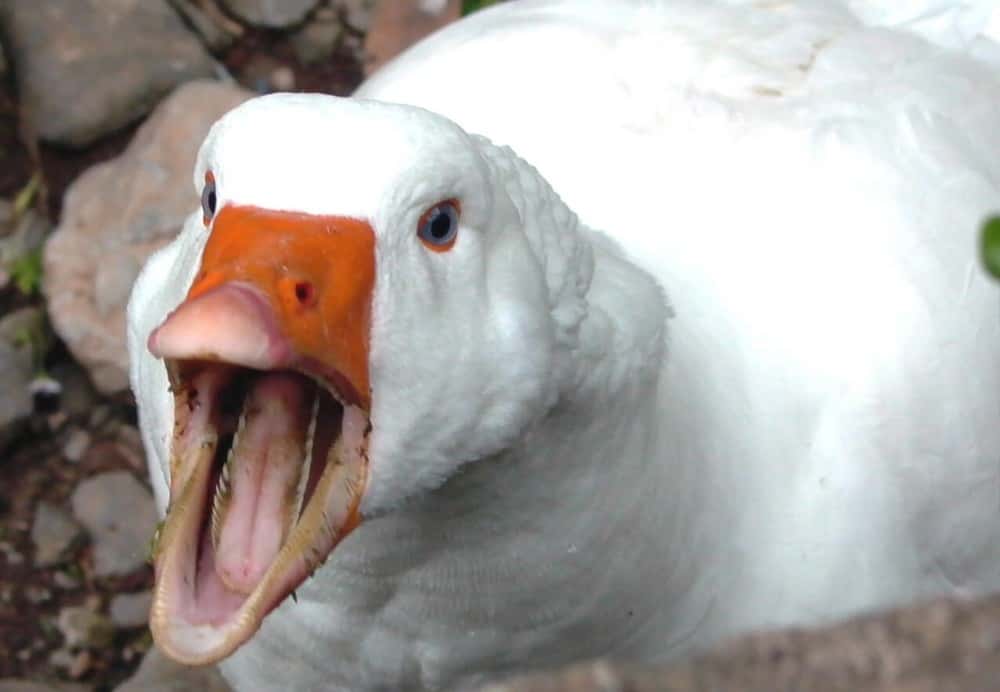
The lamellae aren’t typically visible unless the bill is opened.
How Do Ducks Eat?
A duck will use the soft edge of their beaks to locate food. Then they use the tip of their beak called the nail to help grab it. The ducks use the lamellae or bristle-like notches inside of their bill to grab bigger pieces of food like fish or leafy greens.
Ducks do enjoy eating food that’s a little wet, however. When swallowing things practically whole, you need a little moisture to help it all go down smoothly.
For that reason, you may notice after feeding your duck; they may go over and grab a drink of water to help them swallow. The kind of food a duck will typically eat depends on its bill’s shape, size, and special features.
It’s pretty neat that these special features of a duckbill can help ducks find food in murky water. They typically don’t use sight as much as they do touch. Which is totally different from the way chickens search for food. Chickens typically use sight to find food.
It seems strange to me how chickens can see so well with those tiny little eyes. However, they can spot a hawk way up in the sky and alert the rest of the flock! The instincts and special features of animals are pretty amazing to me.
Do Ducks Bite?
Yeah, so they don’t have teeth. We’ve established that right? So they can basically nibble on you at best. However, does it hurt?
First of all, it’s rare that an adult domestic duck would chomp down on your fingers. So it’s not a huge worry.
For the most part, a nibble doesn’t hurt. My duck will eat out of my hand and occasionally nibble my finger with the tip of the bill. It’s just weird or uncomfortable but not painful.
Most domestic ducks don’t have lamellae that are course enough to actually hurt. However, it may be a little uncomfortable. Especially if you try to pull your hand out, but not painful.
I haven’t had this happen, but I’ve heard a broody duck might actually pinch you pretty hard if you get a little too close.
Other waterfowl with tooth-like structures
While ducks may not have teeth, there are other waterfowl that have tooth-like structures. For example, the merganser is a type of duck that has a serrated beak that resembles teeth. This beak allows the merganser to catch and eat fish, which makes up a large part of its diet.
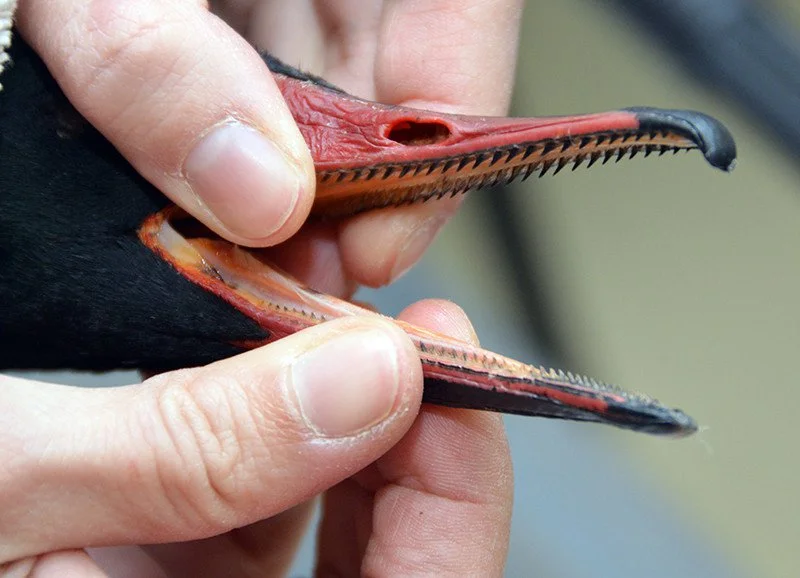
Another waterfowl with tooth-like structures is the Muscovy duck. Unlike the merganser, the Muscovy duck has a fleshy protrusion on its beak that resembles a tooth. This protrusion (called a caruncle) is used for display purposes during mating season and does not aid in feeding.
In addition to these two types of waterfowl, the Australian wood duck has a unique feature known as a “filter tooth.” This tooth-like structure is located on the edge of the duck’s bill and helps it filter food from the water. The filter tooth is made of a hard keratin material, similar to that of a human fingernail.
While ducks may not have traditional teeth, these other waterfowl have adapted in unique ways to help them catch and consume their food.
The myth of the “duck teeth” in popular culture
The myth of ducks having teeth has been popularized in various forms of media, including cartoons, comics, and even in some children’s books. This myth likely originated from the appearance of serrations on the edges of a duck’s bill, which can look like teeth from a distance. However, these serrations are not true teeth and are used by ducks to filter food from the water they swim in.
Despite the lack of teeth, ducks have a unique and efficient digestive system that allows them to break down food in their gizzards, which is a muscular part of their stomach. This ability, combined with their serrated bill edges, allows ducks to obtain the necessary nutrients from their diet of aquatic plants and small aquatic animals.
While the myth of ducks having teeth may be entertaining, it is important to note that this is just a myth and does not accurately reflect the anatomy of these fascinating birds. So, the next time you see a duck swimming in a pond or waddling on land, remember that they don’t have teeth, but they have a highly adapted bill and digestive system that allows them to thrive in their environment.
In Summary
In summary, ducks don’t have teeth. They do have some bristle-like notches in their bill, that help them grab food. The lamellae and the nail are special little tools that help the duck find and devour food!
As far as duck bites go, it’s not really a thing since they don’t have teeth. The worst thing that could happen is that they could use their bill to pinch you. It might be a little uncomfortable from what I understand, but not super painful. I might be wrong about that since I haven’t been pinched by a duckbill. However, you should survive most duck bites.
Thank you for joining us for this post! We hope to have more posts about ducks soon, so check back with us! If you have questions leave me a comment!
I hope that this post was informative for you and I hope you learned something from it. Raising ducks is so fun, they have amazing personalities. Duck eggs are delicious and have super thick eggshells compared to chickens! The eggs are perfect for baking too!

